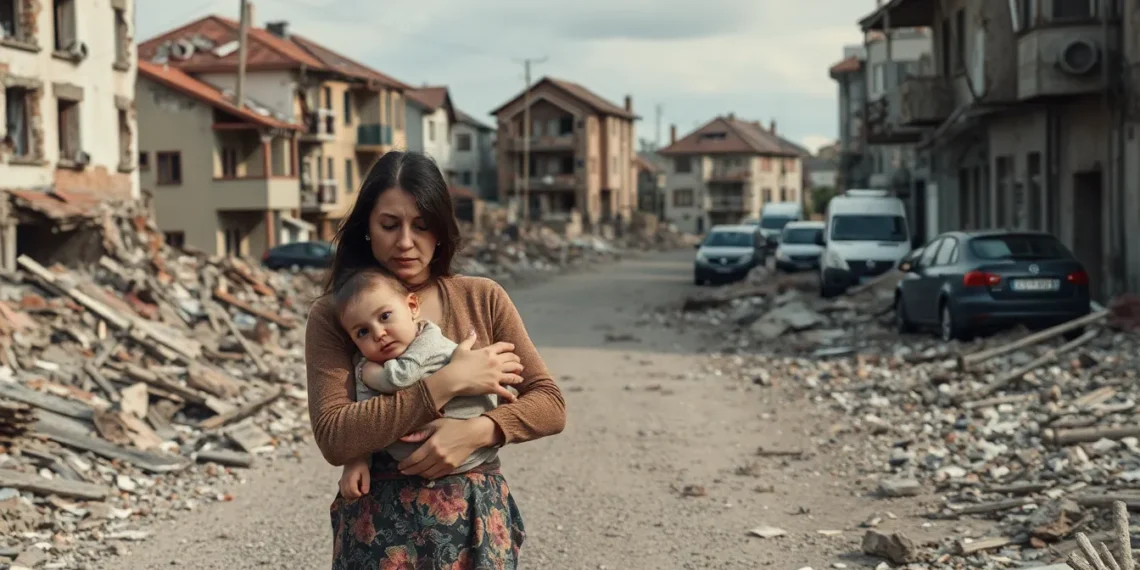The ongoing conflict in Ukraine has cast a long shadow over the nation, leaving countless families devastated and communities shattered. As the war rages on, the human cost continues to rise, prompting urgent questions about the toll on Ukrainian lives. Just how many have been lost in this tragic saga?
While numbers can sometimes feel abstract, each statistic represents a life filled with dreams, aspirations, and loved ones. Understanding the human impact of this war is crucial for grasping the larger narrative of resilience and struggle. In this article, we’ll delve into the heartbreaking figures and the stories behind them, shedding light on a crisis that won’t soon be forgotten. Buckle up; it’s a journey through both sorrow and strength.
Overview Of The Conflict
The conflict in Ukraine began in 2014 with Russia’s annexation of Crimea. Rising tensions quickly escalated into a full-scale war, resulting in significant military and civilian casualties. Reports from various sources indicate that the human cost is staggering, with estimates of Ukrainian military deaths reaching upwards of 70,000 as of late 2023. Civilian casualties also remain high, with over 10,000 reported deaths since the conflict started.
In cities like Mariupol and Bakhmut, fighting has resulted in immense destruction and loss of life. Humanitarian crises emerged as families faced displacement, loss, and grief. Numerous organizations, including the United Nations, collect data on casualties, providing insight into the severity of the situation. Witness accounts reflect not only the statistics but also the personal stories of resilience and trauma.
Efforts by the international community to mediate peace are ongoing, but the war continues to take a toll on Ukraine’s population. Reports show that the conflict has not just strained military resources; it has also disrupted families, communities, and the economy. Aid organizations play a crucial role in addressing the immediate needs of those affected, offering support in various forms including food, shelter, and psychological assistance.
The emotional toll of this war extends beyond the battlefield, affecting mental health and social structures. Survivors often grapple with trauma and loss, highlighting the need for long-term psychological support. Understanding the depth of this conflict involves recognizing both the staggering statistics and the very real human beings behind those numbers.
Casualty Statistics
The ongoing conflict in Ukraine has resulted in heartbreaking casualty figures. Understanding the extent of military and civilian losses provides insight into the war’s devastating impact.
Official Reports
Ukraine’s military casualties have reached approximately 70,000 according to official sources. Civilian death toll estimates exceed 10,000 based on government data. These numbers highlight the profound tragedy faced by families. Additionally, cities such as Mariupol and Bakhmut have witnessed extensive destruction, further complicating rescue and recovery efforts. International organizations often rely on these reports to gauge the situation’s urgency. Continuous updates from both government and non-governmental organizations reflect the ongoing nature of this humanitarian crisis.
Independent Estimates
Independent analysts suggest that casualty figures might be even higher than reported. Various estimates indicate military deaths could surpass 100,000 due to unconfirmed reports and the chaotic nature of warfare. Civilian casualties may similarly be underreported, as many fatalities occur in areas where access is limited. Accurate numbers remain challenging to determine, making independent research vital. Understanding these estimates assists in creating a comprehensive picture of the ongoing conflict’s toll. Analysts emphasize the importance of verifying data to offer a clearer view of the losses endured by the Ukrainian people.
Impact Of Casualties
The ongoing war in Ukraine shapes significant humanitarian and societal challenges. Loss of life leads to deeper emotional scars for families and communities.
Humanitarian Consequences
Displacement affects millions. As of the latest reports, over 10 million people were displaced, facing severe food insecurity. Cities like Mariupol grapple with the destruction of infrastructure, limiting access to basic services. Humanitarian organizations provide essential support, but resources frequently fall short of needs. Psychological trauma also intensifies among survivors, requiring increased mental health resources. Families bear the burden of grief and loss, making recovery all the more difficult.
Societal Implications
Societal structures undergo significant strain from the ongoing conflict. Increased casualty figures disrupt family units, affecting future generations. Communities face challenges in rebuilding, with many people fleeing the violence. Economic ramifications also arise from interrupted livelihoods and workforce depletion. Education suffers, as schools close or face severe limitations, impacting children’s futures. Restoring trust and cohesion takes years, complicating efforts to heal divided communities.
Challenges In Accurate Reporting
Determining accurate casualty figures in the ongoing conflict proves challenging. Information from various sources often contradicts, leading to confusion about the true extent of military and civilian losses. Researchers face difficulties in verifying reports due to the chaotic nature of warfare.
Civilians often remain unaccounted for in official statistics, resulting in significant underreporting. Displacement complicates this further; many families cannot be located, making casualty assessments imprecise. While official reports estimate around 70,000 military deaths, independent analysts suggest actual numbers could exceed 100,000.
Communication difficulties hinder the collection of reliable data. Access to frontline areas remains restricted, limiting both humanitarian workers and journalists. Additionally, misinformation spreads rapidly across social media, confusing public understanding of the situation.
Important factors also include the emotional toll on communities. Families endure not only the loss of loved ones but also the uncertainty surrounding their status. Psychological trauma persists long after the physical conflicts cease.
More data and independent verification become essential for a clearer picture of casualties. Collaboration among international organizations, governments, and local authorities might enhance accuracy. Ensuring reliable reporting remains crucial for understanding the human impact of the war and addressing the needs of affected populations.
A Story That Deserves To Be Heard
The ongoing war in Ukraine has inflicted profound pain and loss on countless families and communities. The staggering numbers of military and civilian casualties reflect not only the scale of the tragedy but also the resilience of those who continue to endure. Each statistic represents a life forever altered and a story that deserves to be heard.
As the conflict persists the need for accurate data and compassionate support becomes increasingly critical. Understanding the human impact of this war is essential for fostering empathy and driving meaningful action. The journey toward healing and recovery will be long and challenging but acknowledging the depth of this crisis is the first step toward rebuilding hope for the future.







